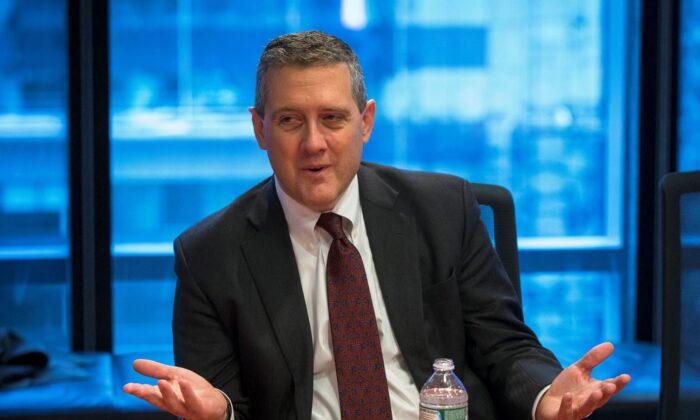In the aftermath of the January inflation reading, James Bullard, president of the Federal Reserve Bank of St. Louis, has been doing the media rounds and making comments that have been generating headlines across the business media landscape.
After the annual consumer price index (CPI) climbed to a 40-year high of 7.5 percent, Bullard suggested that it might be time for the Federal Open Market Committee (FOMC) to institute a full percentage point of rate hikes over its next three meetings. He warned that policymakers could be making a mistake by thinking that inflation would dissipate, particularly after incorrectly arguing for much of last year that higher prices would be transitory.
Speaking during a recent panel discussion at Columbia University, Bullard cautioned that rampant price inflation could metastasize into a severe issue that could prove challenging to resolve.
“We’re at more risk now than we’ve been in a generation that this could get out of control,” he stated.
“One scenario would be a new surprise that hits us that we can’t anticipate right now, but we would have even more inflation. That’s the kind of situation that we want to make sure it doesn’t occur.”

“Don’t let anybody tell you it’s tight policy,” Bullard said. “It’s removal of accommodation that will signal that we take our responsibility seriously.”
The U.S. federal funds rate is in the current target range of zero to 0.25 percent. Even if the Fed pulls the trigger on a 25- or 50-basis-point increase at the March policy meeting, it will remain immensely below the 15 percent fed funds rate the last time inflation was this high.
Therefore, given these circumstances, he believes the institution must become more aggressive compared to previous efforts throughout the Fed’s history when fighting inflation. This way, Bullard noted, the Fed can grapple with the second consecutive year of red-hot inflation.
Ultimately, according to Bullard, the benchmark interest rate needs to climb above 2 percent to curb prices.
His colleagues aren’t in agreement with these policy recommendations.
Fed Bank of Chicago President Charles Evans told a New York conference hosted by the University of Chicago Booth School of Business that long-term inflation in the United States will be low. With this in mind, Evans isn’t advocating substantial rate increases, although he believes the Fed “requires a substantial repositioning of monetary policy.”
Cleveland Fed Bank President Loretta Mester stated that a faster pace of rate increases would be more reasonable than a half-point adjustment.
San Francisco Fed President Mary Daly and Richmond Fed President Thomas Barkin rejected the premise that a significant rate boost is needed to curtail rampant inflation.
Although Bullard noted that his case for 100 basis points by July 1 isn’t what the central bank needs to do, he does say the Fed needs to get started on rates to rein in inflation.
But while the minutes from the January rate-setting committee meeting show that officials are ready to expand their quantitative tightening efforts by shrinking the balance sheet and raising rates, market analysts warn that this could trigger a slowdown in the post-pandemic economy.
Several institutions and organizations are anticipating tepid GDP growth in the first quarter.
The consensus is that economic growth will be weaker in the current quarter than in the previous one. Would a slowing economy give pause to a tightening acceleration, despite red-hot inflation? This might be the next major debate for Fed policymakers.




